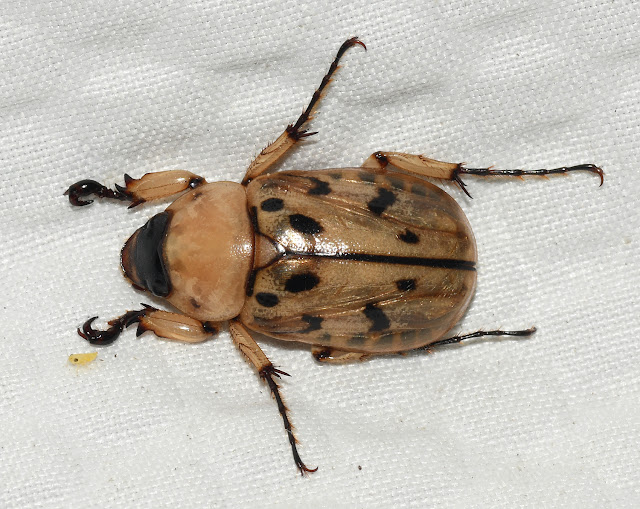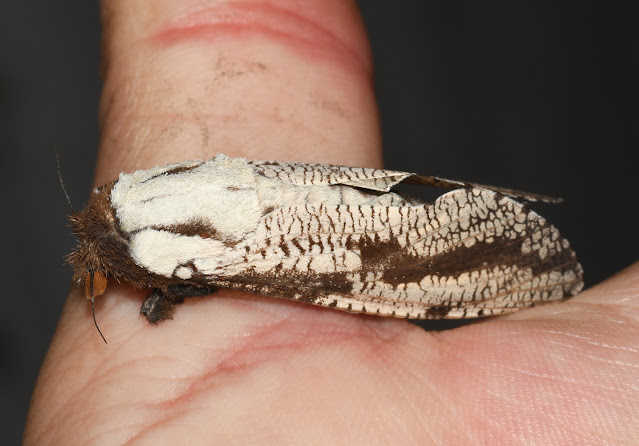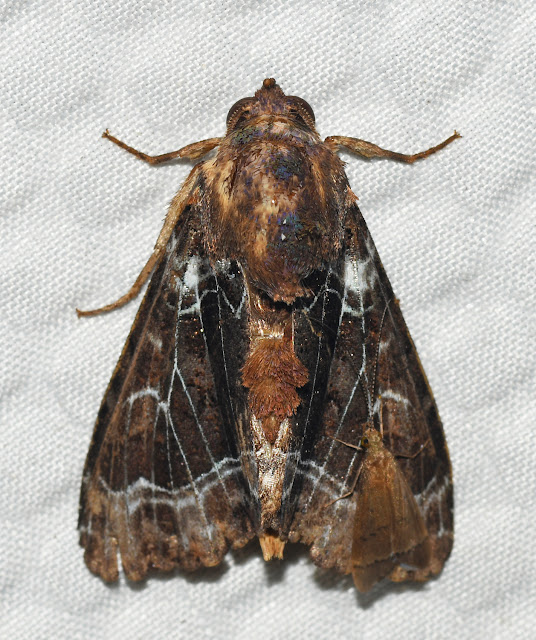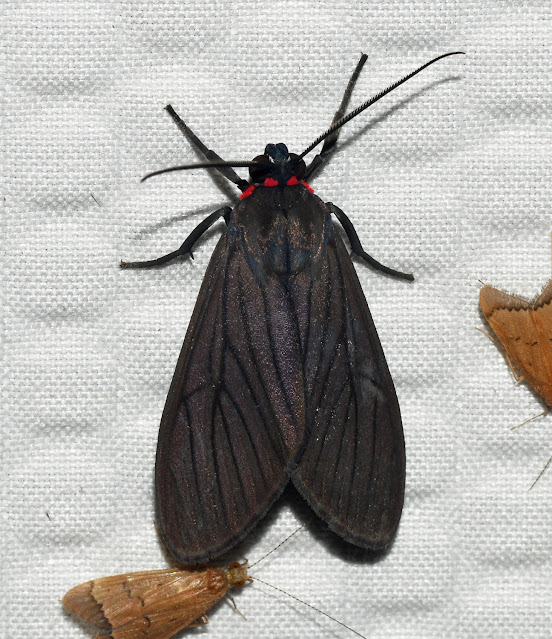Mothing has become a passion of mine, having first taken hold in the summer of 2019 when I purchased a small black light that I utilized from the back porch of our rental house in Niagara Falls, Ontario. The addiction grew and I upgraded to a LepiLED, which is a lightweight, waterproof, and energy efficient light which seems to pull in a decent variety of moths due to the wavelengths that it produces. Over the last couple of years I have probably spent close to equal amounts of time mothing as I have birding, and during the summer months I rarely pick up binoculars at all since the mothing is so all-consuming!
Laura and I always pack the LepiLED, a sheet, a length of paracord, a powerbank and other mothing paraphernalia whenever we travel. The entire setup weighs only a couple of pounds and can be easily taken with us on our international trips.
Unfortunately, opportunities to set up the sheet have been rather limited in the three weeks that we have spent in Peru so far this summer. To save money, we typically stay at cheap hotels located within towns/cities (where mothing is not practical, nor would be productive), eschewing the high costs of lodges set in beautiful, forested surroundings. However, our stay at Hacienda Armorique provided the first (and only, so far) opportunity to string up the light and see what nocturnal curiosities would arrive.
And wow, were our expectations exceeded! In my experience, it is really hard to predict when and where we would have a good mothing session when we are in the Neotropics. Variables such as the time of year, amount of recent rainfall, moon phase, and habitat all are hugely important and it is never easy (for me, at least) to ascertain why some night are incredible, while others are mediocre or worse. But we must have hit the right mix of variables at Hacienda Armorique since our sheet was popping off during both evenings that we setup behind the hacienda at the edge of the forest.
As you can see, the action on the sheet was absolutely insane. I photographed nearly 300 species of moths in the two evenings, despite spending approximately two hours in total at the sheet, and I will be lucky to figure out the identifications of maybe half of them. Of course, I haven't had the time yet to identify the moths and other insects since it is a laborious task. At home in North America, the collective knowledge is that much more accessible in books and online, due to the high number of people studying moths and the relatively low species diversity in temperate climes. But in the Neotropics, much of the knowledge is tied up in scientific journals, plus the diversity is that much higher and so much remains unknown.
While I haven't been able to put species names to these moths yet, I have whittled down and edited my photos. Below are some of my favourites from Hacienda Armorique. Enjoy!



























































































































No comments:
Post a Comment